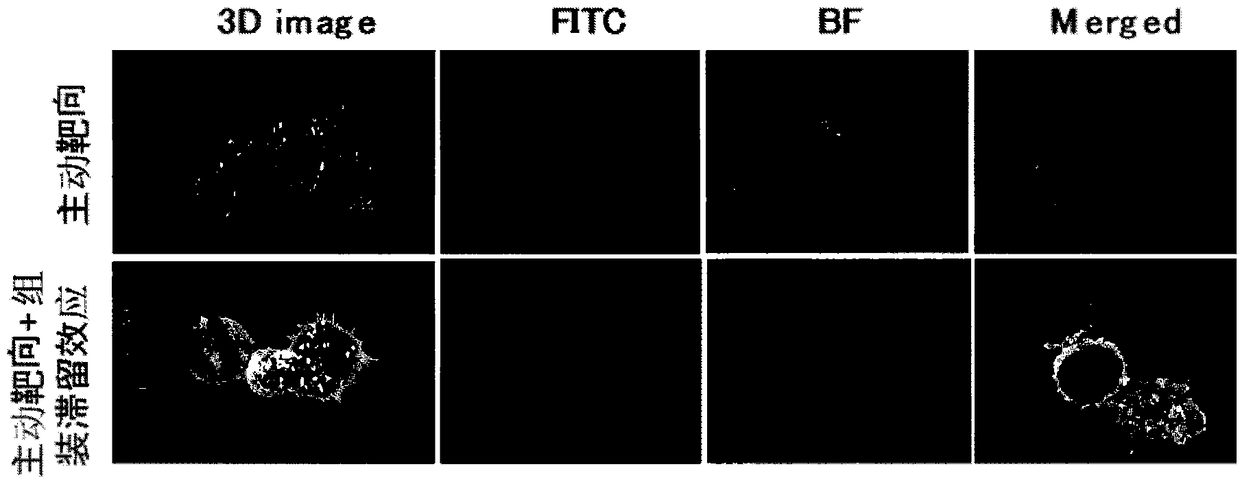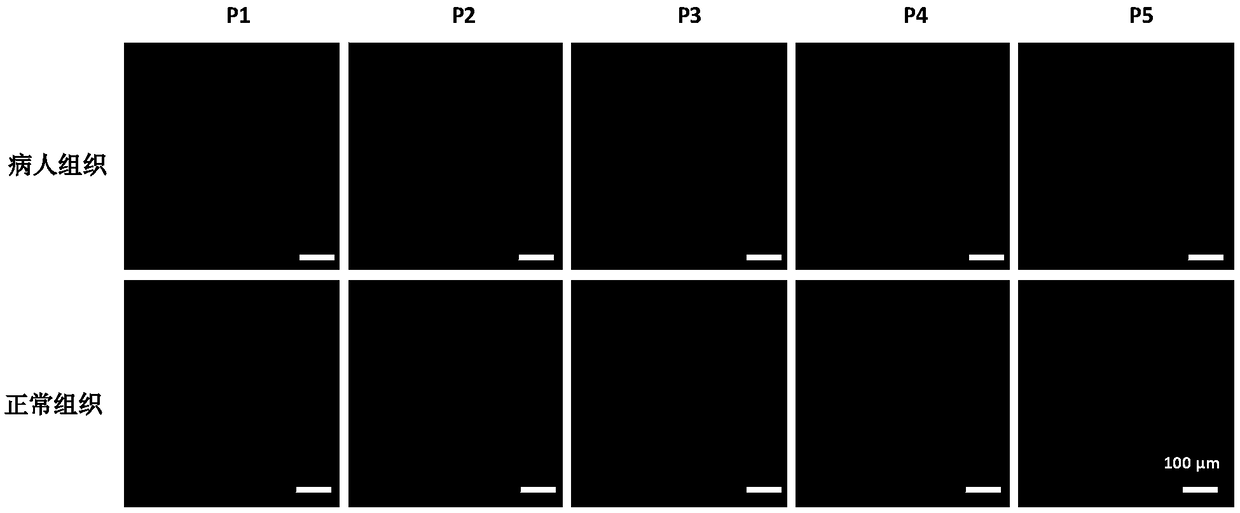Molecular imaging probe and application thereof
A molecular imaging and probe technology, applied in molecular imaging probes and their application fields, can solve the problems of difficult and precise tumor resection, high postoperative recurrence rate, and high dependence on doctor's experience, so as to improve postoperative quality of life, The effect of reducing postoperative recurrence rate and improving surgical success rate
- Summary
- Abstract
- Description
- Claims
- Application Information
AI Technical Summary
Problems solved by technology
Method used
Image
Examples
Embodiment 1
[0040] Example 1 Preparation of Molecular Imaging Probes
[0041] In this example, molecular imaging probes were prepared by the following methods:
[0042] The molecular imaging probe uses RGD as the specific targeting recognition part, uses GPAKLVFFCT as the response assembly retention part, and the side chain near-infrared fluorescent dye molecule is IR783. The molecular structure is shown in formula I. The synthesis and preparation steps are as follows:
[0043] (1) Adopt the Fmoc solid-phase synthesis method, select the modified density of Wang resin as 0.35mM, synthesize the polypeptide on the resin, remove the Fmoc protection of the amino terminal with the DMF solution of hexahydropyridine, and use the carboxyl group of the next amino acid with 4 -Methylmorpholine and benzotriazole-N,N,N',N'-tetramethyluronium hexafluorophosphate in DMF for activation, followed by condensation with the deprotected first amino acid, repeated The above steps until the condensation of all...
Embodiment 2
[0047] Example 2 Preparation of Molecular Imaging Probes
[0048] In this example, molecular imaging probes were prepared by the following methods:
[0049] The molecular imaging probe uses RGD as the specific targeting recognition part, and uses GPVKLVFFCT as the response assembly retention part. The side chain near-infrared fluorescent dye molecule is IR783. The molecular structure is shown in formula I. The synthesis and preparation steps are as follows:
[0050] (1) Adopt the Fmoc solid-phase synthesis method, select the modified density of Wang resin as 0.35mM, synthesize the polypeptide on the resin, remove the Fmoc protection of the amino terminal with the DMF solution of hexahydropyridine, and use the carboxyl group of the next amino acid with 4 -Methylmorpholine and benzotriazole-N,N,N',N'-tetramethyluronium hexafluorophosphate in DMF for activation, followed by condensation with the deprotected first amino acid, repeated The above steps until the condensation of all...
Embodiment 3
[0054] Example 3 Preparation of Molecular Imaging Probes
[0055] In this example, molecular imaging probes were prepared by the following methods:
[0056] The molecular imaging probe uses RGD as the specific targeting recognition part, uses GPLKLVFFCT as the response assembly retention part, and the side chain near-infrared fluorescent dye molecule is IR783. The molecular structure is shown in formula I. The synthesis and preparation steps are as follows:
[0057] (1) Adopt the Fmoc solid-phase synthesis method, select the modified density of Wang resin as 0.35mM, synthesize the polypeptide on the resin, remove the Fmoc protection of the amino terminal with the DMF solution of hexahydropyridine, and use the carboxyl group of the next amino acid with 4 -Methylmorpholine and benzotriazole-N,N,N',N'-tetramethyluronium hexafluorophosphate in DMF for activation, followed by condensation with the deprotected first amino acid, repeated The above steps until the condensation of all...
PUM
| Property | Measurement | Unit |
|---|---|---|
| diameter | aaaaa | aaaaa |
| thickness | aaaaa | aaaaa |
Abstract
Description
Claims
Application Information
 Login to View More
Login to View More - R&D
- Intellectual Property
- Life Sciences
- Materials
- Tech Scout
- Unparalleled Data Quality
- Higher Quality Content
- 60% Fewer Hallucinations
Browse by: Latest US Patents, China's latest patents, Technical Efficacy Thesaurus, Application Domain, Technology Topic, Popular Technical Reports.
© 2025 PatSnap. All rights reserved.Legal|Privacy policy|Modern Slavery Act Transparency Statement|Sitemap|About US| Contact US: help@patsnap.com



